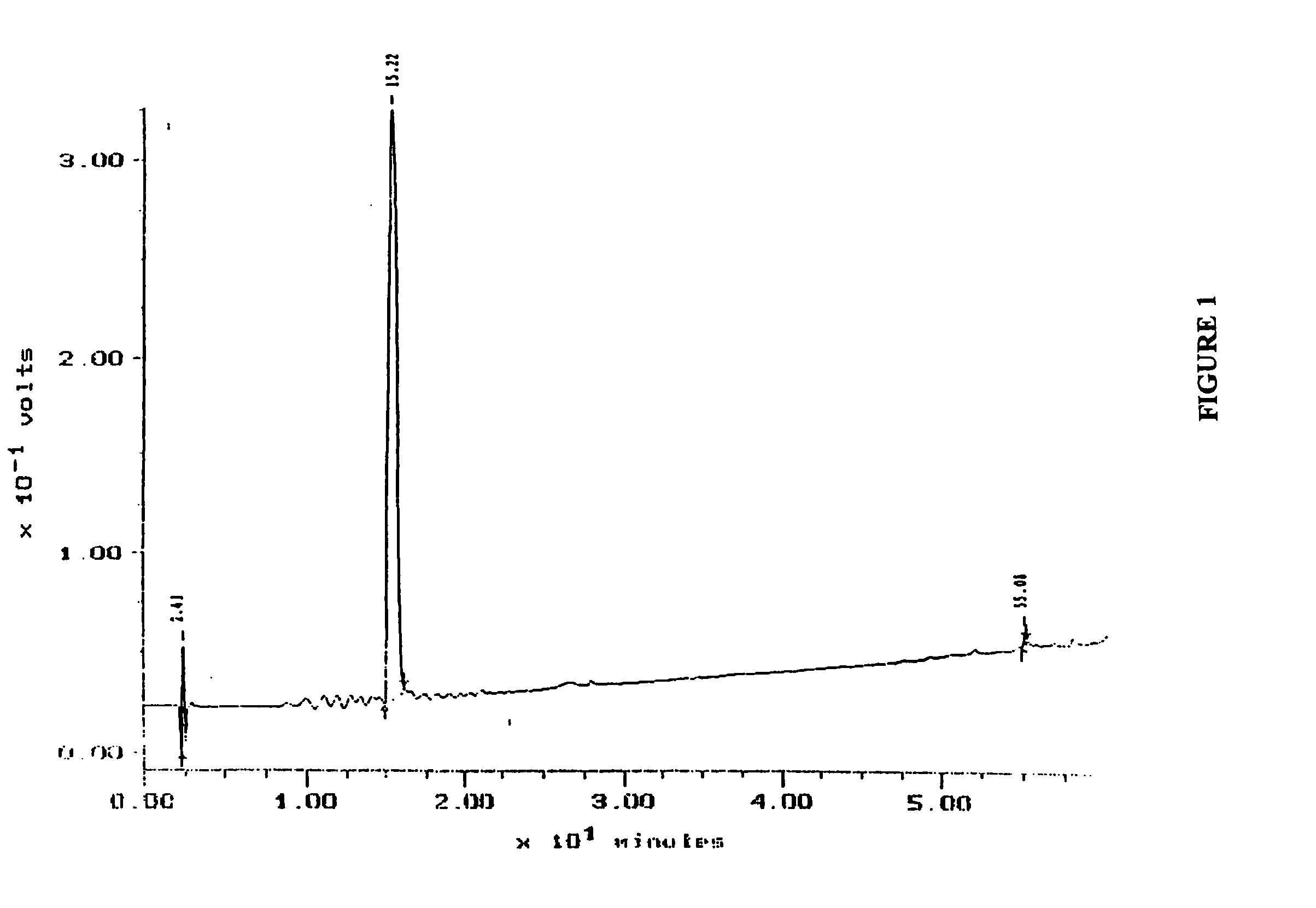Treatment and prevention of viral hepatitis infections
a technology for viral hepatitis and infection, applied in the field of treatment and prevention of viral hepatitis infections, can solve the problems of permanent and life-threatening damage, debilitating symptoms of viral hepatitis, loss of appetite, etc., and achieve the effect of inhibiting hiv-1 replication and minimal toxicity
- Summary
- Abstract
- Description
- Claims
- Application Information
AI Technical Summary
Benefits of technology
Problems solved by technology
Method used
Image
Examples
example 1
Isolation of a Small Molecule from Baboon Blood
[0053] Peripheral blood monocytes (PBMC) were isolated from whole baboon blood using Ficoll-Hypaque density gradient centrifugation or from PBMCs further expanded in tissue culture following activation with phytohemagglutinin -P (PHA-P) and growth in medium containing interleukin-2 (IL-2). In either case, the PBMCs first were washed 3 times with sterile phosphate-buffered saline (PBS) and pelleted by centrifugation. The cell pellet then was lysed by resuspension in sterile H2O and held for 96 hours at 4° C. Proteins and nucleic acids were precipitated from the extract and the remaining components in the extract were stabilized using 10% (v / v) calcium phosphate buffer (pH 7.4) containing 0.01% calcium chloride and 0.001% ascorbic acid. The solution was clarified by centrifugation followed by filtration through a 0.22 μm filter. This final filtrate represented a 1:50 dilution of the initial cell lysate and is hereafter referred to as LUK...
example 2
Cytotoxicity of LUKOR on Cultured Blood Mononuclear Cells
[0057] Cultured human blood mononuclear cells were cultured in the presence of varying concentrations of LUKOR for 7 days. Solutions containing different concentrations of LUKOR were prepared by diluting the stock solution of LUKOR (1 mg / mL) 1:4, 1:20, 1:100, and 1:500 with PBS. An equal volume of each dilution of LUKOR was added to cultured cells. Medium was changed at Day 3. The resulting cell counts at each concentration of LUKOR are listed in Table 3. A colorimetric assay was used to assess cytotoxicity. A WST-1 test kit (a tetrazolium compound that is the sodium salt of 4-[3-(4-iodophenyl) -2-(4-nitrophenyl)-2H-5-tetra olio]-1,3-benzene dislocate) was used in this assay (Roche Diagnostics, Indianapolis, Ind.).
TABLE 3Cytotoxicity of LUKORDilution (1×)WST-1 (%)Cell Count (%)010010048478.82098106100101100500104106
example 3
Identification of Active Component from LUKOR
[0058] The soluble lysate isolated from PBMCs (LUKOR) was fractionated by HULK as a first step in the identification of the active component. A C18 column (Delta Pak, 15 μm, 300 Å, 0.39×30 cm) with a mobile phase of 0.1% tetrafluoroacetic acid (TFA) in water and a gradient of 0-100% acetonitrile (ACN) was used to separate the components in the cell lysate. One major peak eluting with 30% ACN and two minor peaks at 50% ACN were observed (FIG. 1). The 3 peaks, designated HPLC-1, HPLC-2, and HPLC-3, were collected separately and lyophilized and stored for further characterization by mass spectrometry and NMR.
[0059] Mass spectrometry was performed with a VG BioQ triple quadrupole mass spectrometer operating in the positive ion electrospray ionization mode using the following parameters: scan range m / z 100-950 and 35-700; cone voltage 57V to 63V; source temperature 80° C. to 100° C. Calibration was performed with direction injection analysis...
PUM
| Property | Measurement | Unit |
|---|---|---|
| wt % | aaaaa | aaaaa |
| wt % | aaaaa | aaaaa |
| pH | aaaaa | aaaaa |
Abstract
Description
Claims
Application Information
 Login to View More
Login to View More - R&D
- Intellectual Property
- Life Sciences
- Materials
- Tech Scout
- Unparalleled Data Quality
- Higher Quality Content
- 60% Fewer Hallucinations
Browse by: Latest US Patents, China's latest patents, Technical Efficacy Thesaurus, Application Domain, Technology Topic, Popular Technical Reports.
© 2025 PatSnap. All rights reserved.Legal|Privacy policy|Modern Slavery Act Transparency Statement|Sitemap|About US| Contact US: help@patsnap.com

